The long-awaited Taipei Dome officially opened yesterday, with the indoor professional stadium to hold two trial baseball games next month to test the facility.
Leading a media tour of the domed stadium, Taipei Mayor Chiang Wan-an (蔣萬安) said: “Taipei Dome’s completion is a fulfillment of the public’s demand for a large, top-quality indoor sports stadium.”
“More importantly, it is a wish come true for older Taiwanese baseball fans, who would be able to bring their children here to watch baseball,” he said.
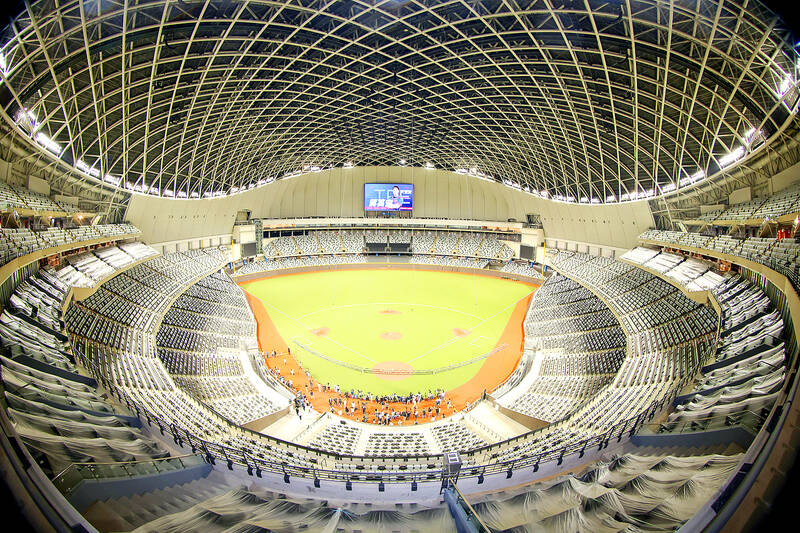
Photo: CNA
“This way they can pass on memories of watching games here to the next generation and together keep a record of happy memories about Taiwanese baseball,” he said.
The dome is to hold two exhibition games for test runs: the first one on Nov. 14, which will not be open to the public, and the second one on Nov. 18, with 12,000 seats open to the public.
Free tickets are available on request from the National Baseball Association, said Yang Shun-chin (楊舜欽), spokesman for the Farglory Group (遠雄集團), the project’s contractor.
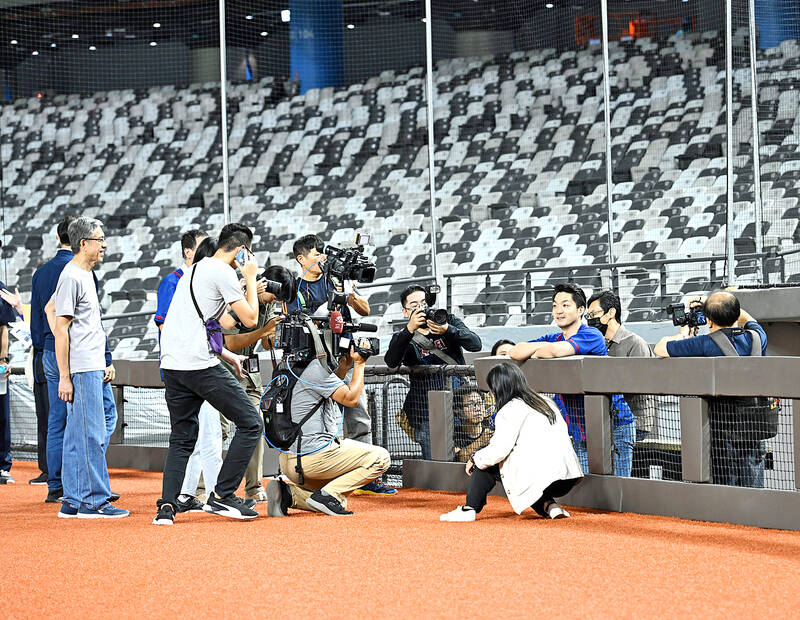
Photo: Tien Yu-hua, Taipei Times
The dome’s facility and seating must be ready by the end of next month for the 30th Asian Baseball Championship tournament, with the games being held at the dome and the Taichung Intercontinental Baseball Stadium, Yang said.
Chiang said that US Major League Baseball had sent an expert, Chad Olsen of BrightView Sports Turf, to inspect the facility.
Olsen listed several items that need to be adjusted or improved, including the pitching mound, the batter’s line of sight, the padded fence behind home plate, a safety net to protect fans from foul balls and a net for the foul pole to ensure the safety of players and fans, Chiang said.
Asked whether the issues had been addressed, Yang said Farglory Group’s working team had fixed them.
Yang added that Olsen had conducted 33 tests inside the stadium, mostly on the artificial turf, the infield’s “red dirt,” the pitching mound and the batter’s box, and that all of them have passed a review by the city government.
“We are certain the dome’s facility and other items conform to international standards, although we are still awaiting feedback after the two test games and would make further adjustments as needed,” Yang said.
Chiang said he would speak again to Farglory Group about the white seats, which players and fans have said could make it difficult to see the ball clearly.
One possible solution is to put on colored seat covers, he said.
Construction of the dome took more than a decade, with the project repeatedly delayed or suspended due to changes in design, safety concerns and other major issues.
“The dome’s opening today is what fans have been waiting for, and also a time to remember for Taipei,” Chiang said, adding that it has been more than three decades since local baseball fans first heard of a promise by then-premier Hau Pei-tsun (郝柏村) to build an indoor sports dome in Taipei.
Hau had attended the seventh decisive game of the Taiwan pro baseball championship finals on Nov. 10, 1991. The Uni-President Lions and the Weichuan Dragons were battling it out at the outdoor Taipei Sports Stadium, when a heavy downpour disrupted the game.
“We want an indoor stadium,” the fans chanted at the time, leading to Hau’s promise and laying the seed that came to fruition with the construction of Taipei Dome.
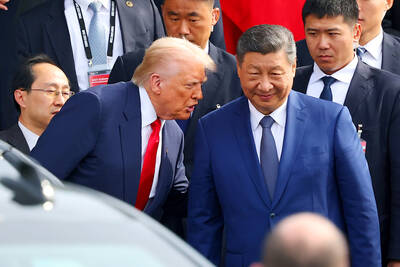
UKRAINE, NVIDIA: The US leader said the subject of Russia’s war had come up ‘very strongly,’ while Jenson Huang was hoping that the conversation was good Chinese President Xi Jinping (習近平) and US President Donald Trump had differing takes following their meeting in Busan, South Korea, yesterday. Xi said that the two sides should complete follow-up work as soon as possible to deliver tangible results that would provide “peace of mind” to China, the US and the rest of the world, while Trump hailed the “great success” of the talks. The two discussed trade, including a deal to reduce tariffs slapped on China for its role in the fentanyl trade, as well as cooperation in ending the war in Ukraine, among other issues, but they did not mention
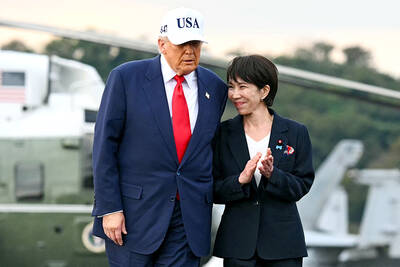
Japanese Prime Minister Sanae Takaichi yesterday lavished US President Donald Trump with praise and vows of a “golden age” of ties on his visit to Tokyo, before inking a deal with Washington aimed at securing critical minerals. Takaichi — Japan’s first female prime minister — pulled out all the stops for Trump in her opening test on the international stage and even announced that she would nominate him for a Nobel Peace Prize, the White House said. Trump has become increasingly focused on the Nobel since his return to power in January and claims to have ended several conflicts around the world,
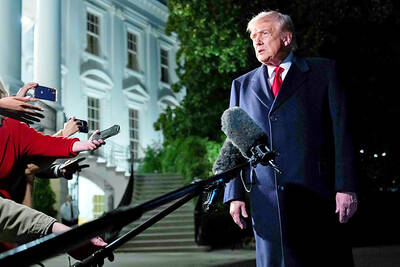
REASSURANCE: The US said Taiwan’s interests would not be harmed during the talk and that it remains steadfast in its support for the nation, the foreign minister said US President Donald Trump on Friday said he would bring up Taiwan with Chinese President Xi Jinping (習近平) during a meeting on the sidelines of the APEC Summit in South Korea this week. “I will be talking about Taiwan [with Xi],” Trump told reporters before he departed for his trip to Asia, adding that he had “a lot of respect for Taiwan.” “We have a lot to talk about with President Xi, and he has a lot to talk about with us. I think we’ll have a good meeting,” Trump said. Taiwan has long been a contentious issue between the US and China.
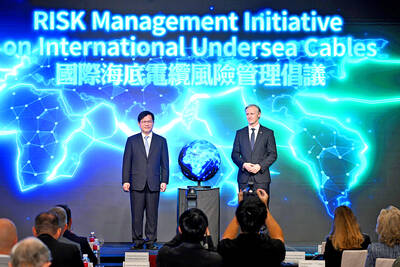
GLOBAL PROJECT: Underseas cables ‘are the nervous system of democratic connectivity,’ which is under stress, Member of the European Parliament Rihards Kols said The government yesterday launched an initiative to promote global cooperation on improved security of undersea cables, following reported disruptions of such cables near Taiwan and around the world. The Management Initiative on International Undersea Cables aims to “bring together stakeholders, align standards, promote best practices and turn shared concerns into beneficial cooperation,” Minister of Foreign Affairs Lin Chia-lung (林佳龍) said at a seminar in Taipei. The project would be known as “RISK,” an acronym for risk mitigation, information sharing, systemic reform and knowledge building, he said at the seminar, titled “Taiwan-Europe Subsea Cable Security Cooperation Forum.” Taiwan sits at a vital junction on